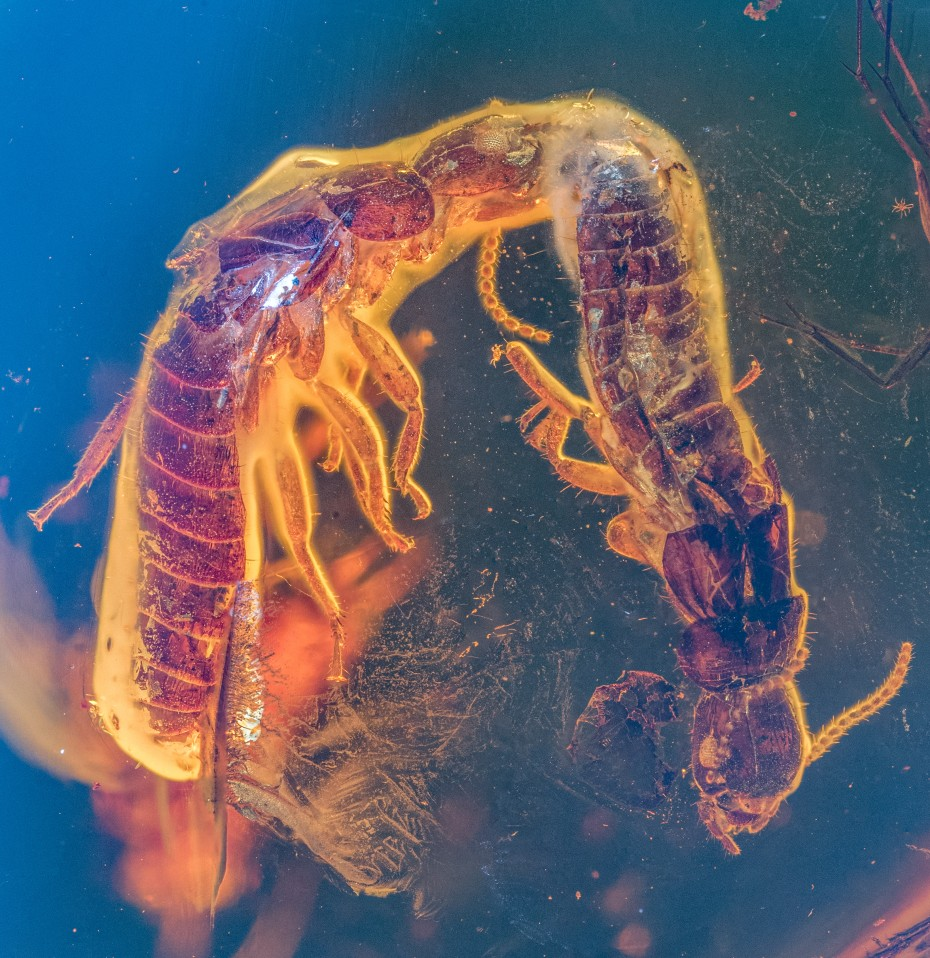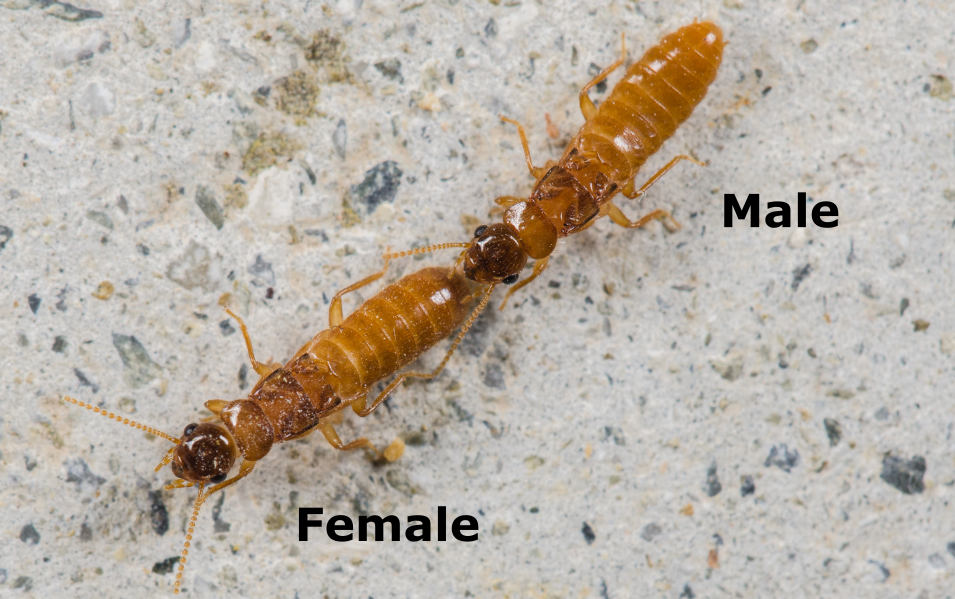It was a mosquito full of dinosaur blood and encased in amber that helped bring the fictional Jurassic Park to life. While real world bugs stuck in sticky substances don’t lead to dangerous dinosaur parks (yet), they do offer scientists a peek into their past shapes and behaviors. A pair of 38 million year-old termites trapped in tree resin in the middle of a mating behavior are helping scientists understand the mating behaviors of extinct insects. The finding is detailed in a study published March 5 in the Proceedings of the National Academy of Sciences (PNAS).
The two termites are an extinct species called Electrotermes affinis (E. affinis) and the discovery of this fossil was a bit lucky. Study co-author and entomologist from the Czech Academy of Sciences Aleš Buček saw the piece of amber in an online shop for fossil collectors.
“Termite fossils are very common, but this piece was unique because it contains a pair,” Buček said in a statement. “I have seen hundreds of fossils with termites enclosed, but never a pair,”
[Related: A 50-million-year-old insect testicle is one lucky find.]
Buček purchased the fossil and a team from the Okinawa Institute of Science and Technology’s (OIST) Evolutionary Genomics Unit in Japan used an X-ray micro-CT to take a closer look at the bugs.

“Identifying the species was actually not easy, because there were bubbles in front of important parts of the termite’s bodies,” study co-author and OIST postdoctoral researcher Simon Hellemans, said in a statement.
The scan revealed what species they belonged to and also that the trapped termites were a female and male laying side by side. The female’s mouthparts were touching the tip of the male’s abdomen. This positioning was familiar to the researchers, as present day termites engage in a mating behavior called tandem running. The insects display coordinated movements to keep themselves together while exploring a new nest site.

However, the fossilized pair’s irregular side-by-side positioning in the amber also stood out. A pair typically would have been observed lying behind each other. The team believed that since the preservation in the amber is not an instantaneous process, the termite’s normal mating behaviors gets interrupted. Their positions then shift while they are being encased in the super sticky tree resin. To test out this hypothesis, they simulated the process in the lab.
“Our approach focused on how fossils are created and how behavior changes during the insect’s death,” study co-author and Auburn University entomologist Nobuaki Mizumoto said in a statement.
[Related: When insects got wings, evolution really took off.]
They looked at mating termite pairs and found that even if the leading individual got trapped on a sticky surface, the follower did not escape or abandon their partner. Instead, they walked around them and also got stuck in a position like the termites stuck in amber.
“If a pair encounters a predator, they usually escape but I think on a sticky surface they do not realize the danger and get trapped,” said Mizumoto.
According to the team, this new way of recreating the process of getting stuck in tree resin allowed them to analyze the behaviors of an extinct species with a new amount of precision.“For some things, fossils are simply the best evidence, a direct window to the past,” said Buček and Mizumoto.





